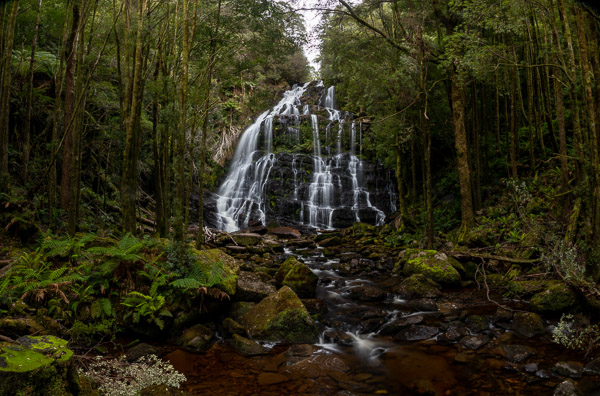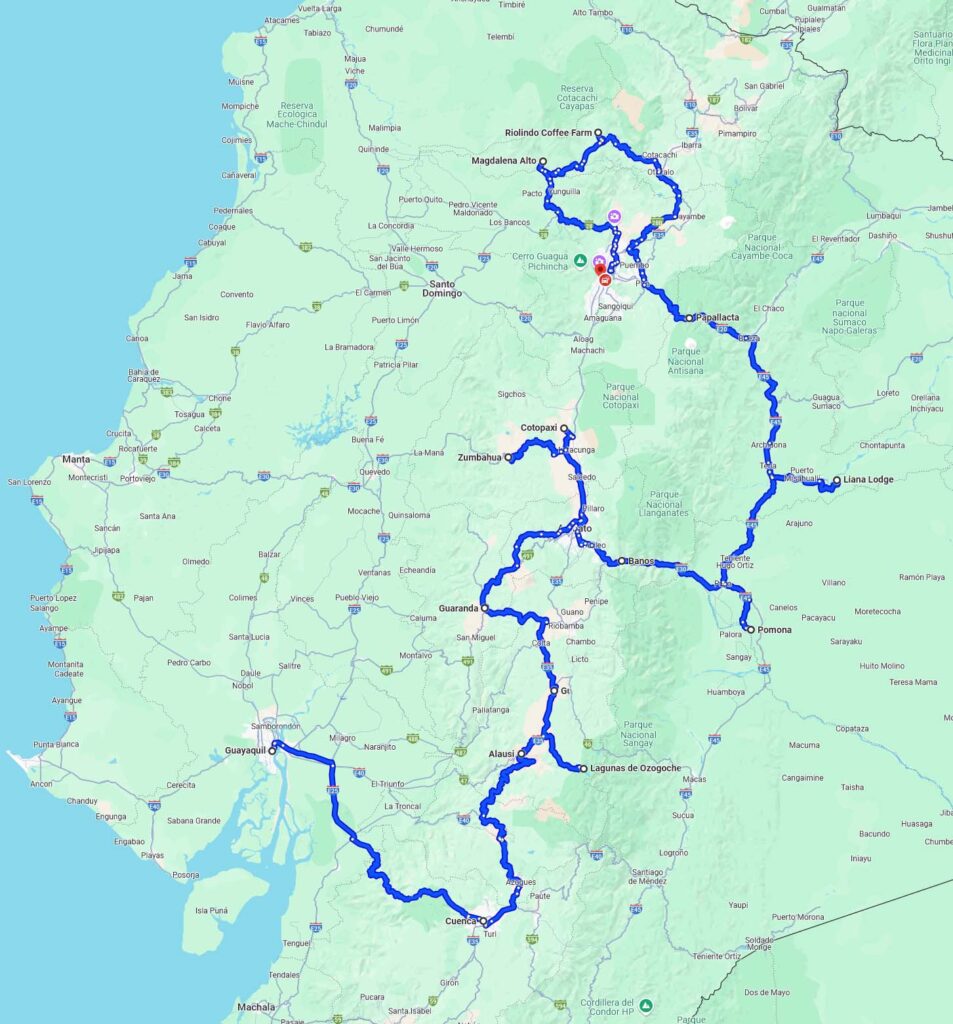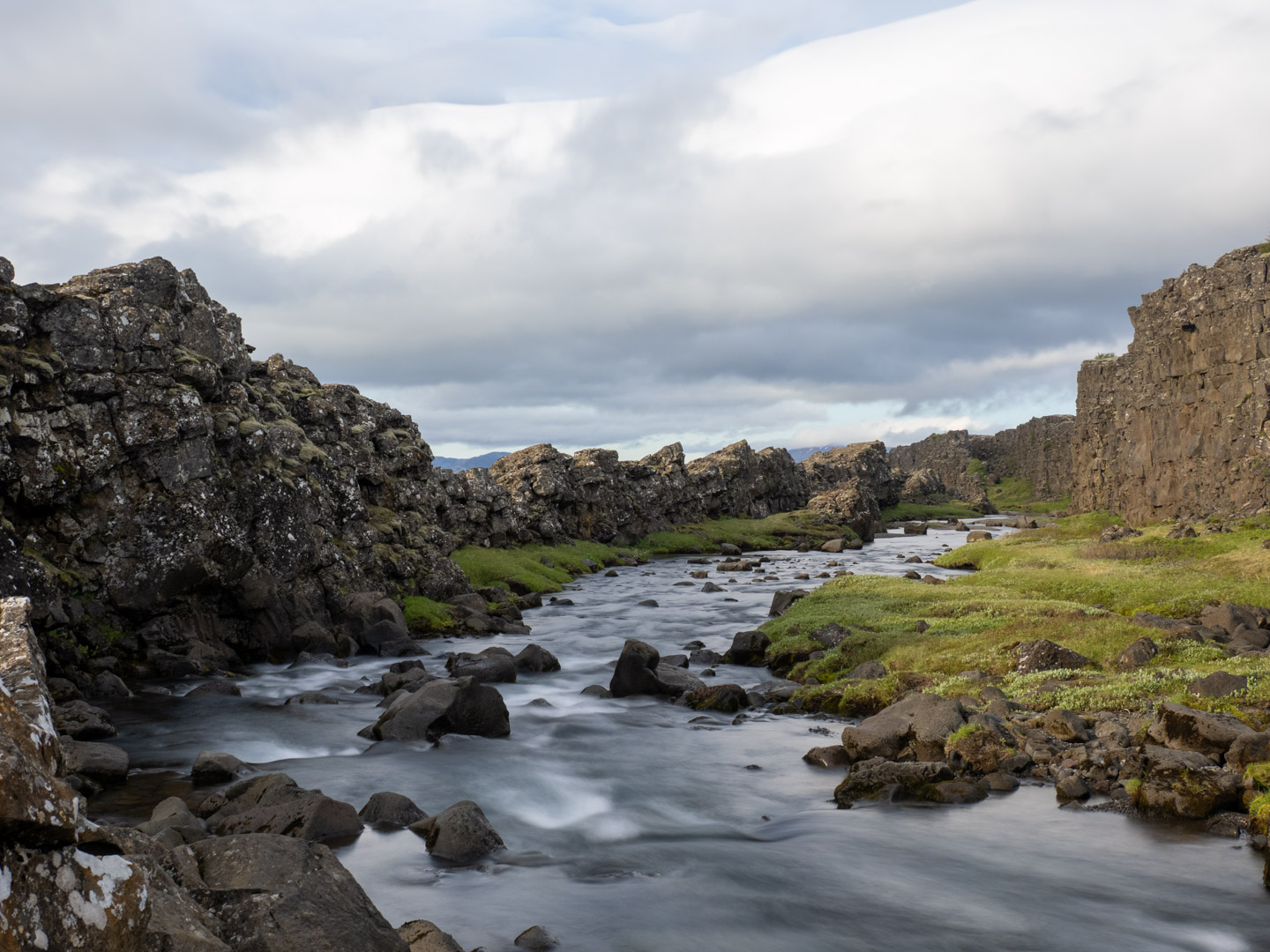We flew into San Jose airport in the morning, somewhat sleep deprived after an overnight flight. Entry formalities were uneventful, baggage was waiting, and the rental car shuttle was waiting.
San Jose airport in the morning, somewhat sleep deprived after an overnight flight. Entry formalities were uneventful, baggage was waiting, and the rental car shuttle was waiting.
First stop was Zooave, a wildlife rescue organisation cum zoo, where we enjoyed a few hot and humid hours touring the exhibits. Then we headed up the Volcan Poas along some decidedly back-street appearing roads (thank goodness for GPS) to our accommodation overlooking the San Jose valley. Then it rained…. and rained … this, being Costa Rica, is normal. This Steven and Judy caught up with us about 9PM (their ticket took them a different route) from SLC.



Afternoon rain
Unfortunately, Volcan Poas was closed … too much volcanic activity at the summit for tourists. So we spent the day circumnavigating the volcano, meandering on twisty roads round precipitous slopes, with gorgeous waterfalls and rainforests, and a road in some disrepair through the pass, and down to Sarchi Norte, a small town famed for its church and its furniture stores. We were caught there by the afternoon rainstorm – this was starting to become a theme.

Next day we spend most of the day at the Poas Waterfall Park which has a collection of wildlife and a series of waterfalls. We spent so long with animals that the afternoon rain caught us on the walk to the waterfalls. Getting wet in the afternoon is becoming a habit.
Next day we headed off to the far north-east, to Tortuguero.

Tortuguero is accessible only by boat, so we had a bit of a rush to get there in time for the 11am ferry. The ferries are narrow, long boats with huge outboards that zoom along at about 25 kph (give or take a few kph for downstream vs upstream – I calculated the river water speed to be 5-7 kph) for the 1 h ride to Tortuguero township.

Tortuguero, residence
Tortuguerro, named for the turtles that haul up to lay their eggs, is a national park, with a township that is a legacy of the earlier phase of logging the forests. The township is somewhat ramshackle, with the main street being a 2 metre wide concrete path elevated about 40 cm from the ground level. Floods are presumably common since the houses are all likewise elevated, and a number of the small shops offer “flood boots for rent”. The remaining ‘streets’ are narrow earth walkways. We settled in to our accommodation and booked an early morning nature tour by canoe before a wander round town.  Up early for the 5:45 AM meeting with the guide accompanied by coffee (not to our taste) and fresh fruit (tasty). The couple of hours on the water in a canoe powered by an electric outboard was very enjoyable and Francesco, our guide showed us lots of animals. He had very sharp eyes and picked out animals we would have missed.
Up early for the 5:45 AM meeting with the guide accompanied by coffee (not to our taste) and fresh fruit (tasty). The couple of hours on the water in a canoe powered by an electric outboard was very enjoyable and Francesco, our guide showed us lots of animals. He had very sharp eyes and picked out animals we would have missed.
 We bought some food for lunch at the local bakery (about AU$10 worth fed all 4 of us), then headed off to the park office to do the 2 km “hike” along the forest behind the beach. It was hot and muggy, but we enjoyed ourselves and saw lots of beasties. A jaguar has been killing occasional turtles along the beach, so we located the recent one (phew! 3 days at 28-25°C and the carcass becomes very ripe). The jaguar was gone (alas) but the local vultures were making a meal of the remains. Further along the beach was a very empty turtle shell, the result of another killing a few weeks before. There were lots of evidence of the turtles along the beach, with many turtle tracks from water’s edge to their selected egg laying spot and back to sea.
We bought some food for lunch at the local bakery (about AU$10 worth fed all 4 of us), then headed off to the park office to do the 2 km “hike” along the forest behind the beach. It was hot and muggy, but we enjoyed ourselves and saw lots of beasties. A jaguar has been killing occasional turtles along the beach, so we located the recent one (phew! 3 days at 28-25°C and the carcass becomes very ripe). The jaguar was gone (alas) but the local vultures were making a meal of the remains. Further along the beach was a very empty turtle shell, the result of another killing a few weeks before. There were lots of evidence of the turtles along the beach, with many turtle tracks from water’s edge to their selected egg laying spot and back to sea.  We spent time photographing lizards, and troupes of monkeys. Alas, the monkeys tended to move just before the camera fired. Sigh! We eventually made it back, had showers, and ate at a local restaurant, before heading off for a “turtle tour”. This promised 2 h with a guide on the beach watching turtles haul out, lay eggs and head back out to sea. In reality, we were one of many groups waiting for a signal from the “spotters”. We weren’t allowed to get onto the beach until after the turtles started egg laying. No cameras allowed. No lights except for the guide … And it RAINED torrentially. The dry path that we had walked in the afternoon quickly became ankle deep in water. We had ponchos (though with the heat and humidity, condensation made us wet on the inside anyway). The first turtle we were allowed to see had turned around without egg laying and was returning to sea. Then we got to rush along the track to another section of beach, and then back, Neand then wait on the beach in drenching rain and wind until we got an all clear from the “spotter” and the guide herded us to the turtle. We got about 20 seconds to admire the nest hole with a collection of eggs, and then we were herded off to give another of the groups chance to see. As a wildlife experience it was somewhat lacking, but I guess standing in torrential rain for 2 hours was an experience to remember.
We spent time photographing lizards, and troupes of monkeys. Alas, the monkeys tended to move just before the camera fired. Sigh! We eventually made it back, had showers, and ate at a local restaurant, before heading off for a “turtle tour”. This promised 2 h with a guide on the beach watching turtles haul out, lay eggs and head back out to sea. In reality, we were one of many groups waiting for a signal from the “spotters”. We weren’t allowed to get onto the beach until after the turtles started egg laying. No cameras allowed. No lights except for the guide … And it RAINED torrentially. The dry path that we had walked in the afternoon quickly became ankle deep in water. We had ponchos (though with the heat and humidity, condensation made us wet on the inside anyway). The first turtle we were allowed to see had turned around without egg laying and was returning to sea. Then we got to rush along the track to another section of beach, and then back, Neand then wait on the beach in drenching rain and wind until we got an all clear from the “spotter” and the guide herded us to the turtle. We got about 20 seconds to admire the nest hole with a collection of eggs, and then we were herded off to give another of the groups chance to see. As a wildlife experience it was somewhat lacking, but I guess standing in torrential rain for 2 hours was an experience to remember.

Red eyed leaf frog
Next day we packed and headed back to the boats for the return to the cars at La Pavona and the drive to our next venue, the Costa Rican Amphibian Research Centre. This is up in the mountains in mixed primary and regenerating rainforest and is run by a keen frog enthusiast. He gave us a 4 hour long night tour focusing on the ecology, where we saw a gazillion amphibians of various sorts,

Fer de lance viper
as well as a Lance de Fer viper – a very, very venomous snake.
Next morning we wandered round the “home paddock” finding frogs in the frog pond and so on, before once again packing and heading off.

Peccary
We had a very enjoyable guided nature walk in the La Selva Nature reserve (it rained, of course – it is rainforest after all), spotting lots of wildlife including a sloth, monkeys and peccaries and lots and lots of different bird species.
Then we headed to our accommodation – Chillamate Eco Lodge for the evening. This place borders the La Selva reserve and comprises a host of buildings in the rainforest, connected by roofed walkways (it rains in the rainforest). We had the “Lodge” to ourselves – a rather odd DIY residence with quirky architecture. They were proud that they had installed a new bathroom for one of the bedrooms, but they hadn’t got round to installing the hot water, so Jill and I had to cope with what they termed “ambient” water temperature. It wasn’t frigid, but it was on the cool side as showers go. After the morning free guided nature walk, we headed onwards, this time towards Volcan Arenal.

Main street La Fortuna. Arenal in background
By good fortune a new highway was opened about a week earlier so we had a reasonably direct and fast road instead of the older alternative that wound through the mountains and took twice as long. Along the older parts we passed through a number of towns. We stopped at one of the largest, La Fortuna, to shop for food in full view of Volcano Arenal.

Costa Rican school

View from our room
A book I read noted that Costa Rica has invested heavily in education and that the country boasts a high level of educational attainment in the population. I snapped a photo of the local school in La Fortuna – basically a couple of prefabricated sheds set out in parallel with the space between roofed in to make a semi-open room. This was far more sophisticated than many schools that we see – in the villages there is usually a single open plan shed, besser blocks to about 120 cm then bars without windows from there to the unlined corrugated iron roof. Clearly, then, you don’t need classy buildings to build a good education system.
Arenal is a spectacular volcano with a classical conical shape and sides sloping at about 40 degrees. We glimpsed it, swathed in clouds as we approached. Our accommodation at Arenal Observatory Lodge had a spectacular view of the volcano.  By good fortune our room had views in that direction, which was nice in the morning when we had views of the mountain top and could see the residual steam plume from the active crater at the summit. Arenal has had several eruptions in recent times, with spectacular lava flows down the sides in 1968, but they assured us that there was little risk of another such eruption as the magma chamber had now emptied and would take 300 years to re-fill.
By good fortune our room had views in that direction, which was nice in the morning when we had views of the mountain top and could see the residual steam plume from the active crater at the summit. Arenal has had several eruptions in recent times, with spectacular lava flows down the sides in 1968, but they assured us that there was little risk of another such eruption as the magma chamber had now emptied and would take 300 years to re-fill.
 We took the morning nature walk, enjoyed the rainforest, took a plunge in the infinity pool with rainforest adjacent. And chased frogs round the frog pond. All very pleasant.
We took the morning nature walk, enjoyed the rainforest, took a plunge in the infinity pool with rainforest adjacent. And chased frogs round the frog pond. All very pleasant.
That’s it for the first week. As usual there are lots of photos at https://photos.app.goo.gl/nyEMKPwUxGXH1vuG3
I haven’t processed all the photos yet, so I’ll add more of them to the next gallery.
 There does not seem to be enough time in the day to keep up with posts. Since the last entry we have been busy exploring. We’ve had warm and sun and cold and snow. Today was -11C, though not too bad when one is appropriately dressed. There are lots of snow ploughs clearing the roads, but lots of icy spots still, so one has to take care walking.
There does not seem to be enough time in the day to keep up with posts. Since the last entry we have been busy exploring. We’ve had warm and sun and cold and snow. Today was -11C, though not too bad when one is appropriately dressed. There are lots of snow ploughs clearing the roads, but lots of icy spots still, so one has to take care walking. A few days ago I walked round the coast enjoying the changing views, past the power station, and found what looked like some sort of religious retreat, with various buildings, open air chapels and statuary.
A few days ago I walked round the coast enjoying the changing views, past the power station, and found what looked like some sort of religious retreat, with various buildings, open air chapels and statuary. Four days ago we visited Anundshog, in the sunshine. Two days ago we visited in snow. Quite a difference. However it was challenging to get photos when the snow is blowing horizontally some of the time, without getting snow on the lens, and with gloves to protect the digits from the cold.
Four days ago we visited Anundshog, in the sunshine. Two days ago we visited in snow. Quite a difference. However it was challenging to get photos when the snow is blowing horizontally some of the time, without getting snow on the lens, and with gloves to protect the digits from the cold.

























































